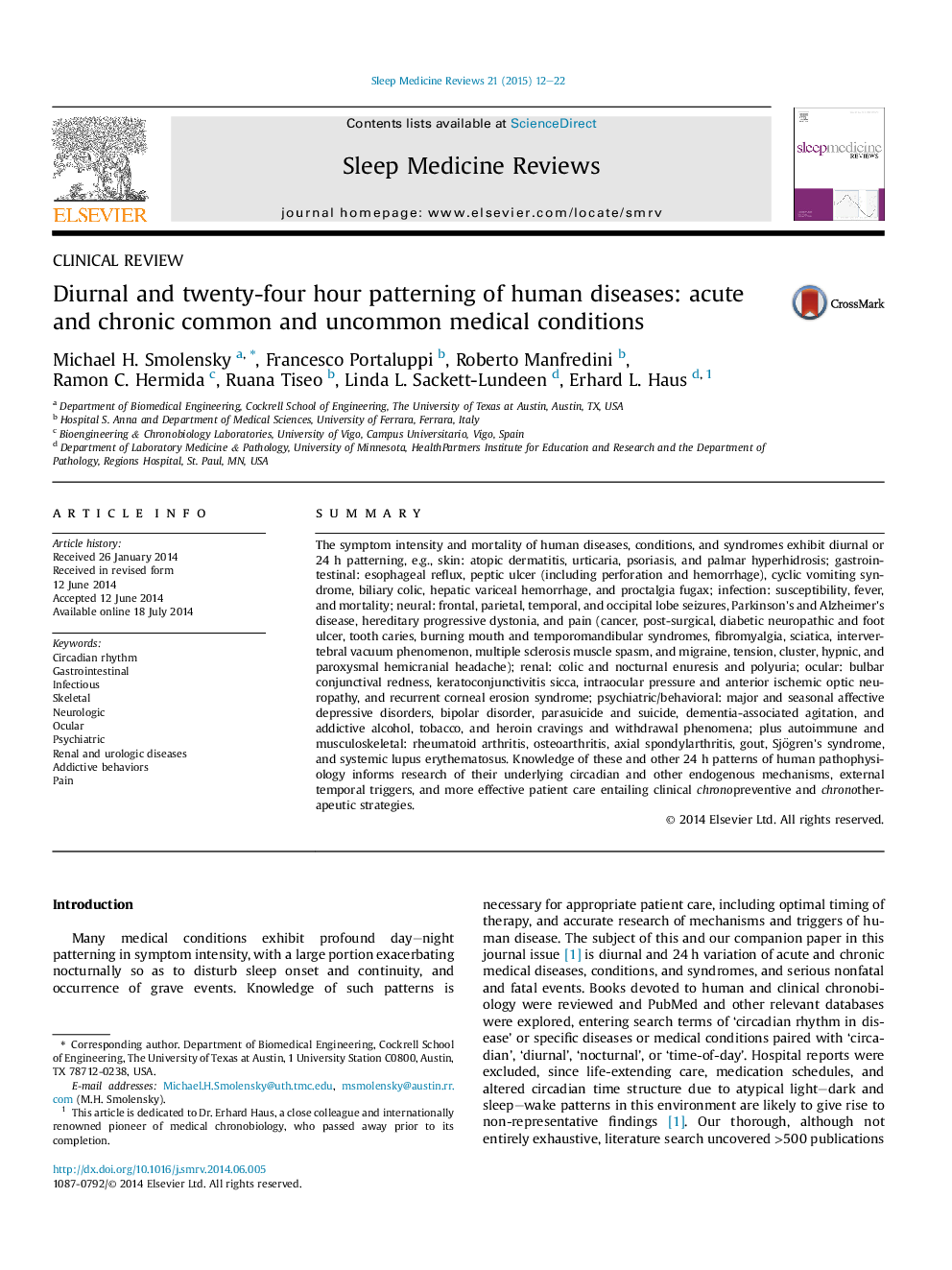| Article ID | Journal | Published Year | Pages | File Type |
|---|---|---|---|---|
| 3091353 | Sleep Medicine Reviews | 2015 | 11 Pages |
SummaryThe symptom intensity and mortality of human diseases, conditions, and syndromes exhibit diurnal or 24 h patterning, e.g., skin: atopic dermatitis, urticaria, psoriasis, and palmar hyperhidrosis; gastrointestinal: esophageal reflux, peptic ulcer (including perforation and hemorrhage), cyclic vomiting syndrome, biliary colic, hepatic variceal hemorrhage, and proctalgia fugax; infection: susceptibility, fever, and mortality; neural: frontal, parietal, temporal, and occipital lobe seizures, Parkinson's and Alzheimer's disease, hereditary progressive dystonia, and pain (cancer, post-surgical, diabetic neuropathic and foot ulcer, tooth caries, burning mouth and temporomandibular syndromes, fibromyalgia, sciatica, intervertebral vacuum phenomenon, multiple sclerosis muscle spasm, and migraine, tension, cluster, hypnic, and paroxysmal hemicranial headache); renal: colic and nocturnal enuresis and polyuria; ocular: bulbar conjunctival redness, keratoconjunctivitis sicca, intraocular pressure and anterior ischemic optic neuropathy, and recurrent corneal erosion syndrome; psychiatric/behavioral: major and seasonal affective depressive disorders, bipolar disorder, parasuicide and suicide, dementia-associated agitation, and addictive alcohol, tobacco, and heroin cravings and withdrawal phenomena; plus autoimmune and musculoskeletal: rheumatoid arthritis, osteoarthritis, axial spondylarthritis, gout, Sjögren's syndrome, and systemic lupus erythematosus. Knowledge of these and other 24 h patterns of human pathophysiology informs research of their underlying circadian and other endogenous mechanisms, external temporal triggers, and more effective patient care entailing clinical chronopreventive and chronotherapeutic strategies.
